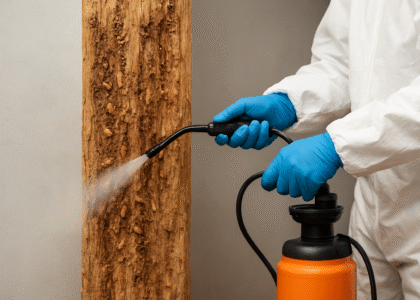Food is an essential part of life, but not all foods are created equal when it comes to safety. Certain foods, which are classified as high-risk, are more prone to contamination with harmful bacteria, viruses, or toxins. While these foods can often be enjoyed without incident, mishandling or improper storage can lead to serious health issues.
This blog will explore what high-risk foods are, why they require extra care, and how you can protect yourself and others by following safe food-handling practices. Continue reading to learn much more about high-risk foods and take steps to safeguard your health.
What Are High-Risk Foods?
High-risk foods are items that are more susceptible to contamination because they provide an ideal environment for bacteria and other pathogens to grow. These foods typically have high protein and moisture content, which, when combined with improper storage or handling, can make them unsafe to consume.
Examples of high-risk foods include:
- Meats and poultry (raw or cooked)
- Dairy products, such as milk, cheese, and cream
- Seafood, including fish, shellfish, and sushi
- Eggs and egg-based dishes, like mayonnaise or custards
- Cooked rice and pasta, as their starch content, provides a fertile ground for bacteria if left at room temperature
- Prepared salads containing meat, mayonnaise, or egg
- Sliced fruits and vegetables that have been pre-prepared or left unrefrigerated
Identifying and understanding these foods is the first step towards reducing the risk of foodborne illnesses.
Why Should You Be Concerned About High-Risk Foods?
The primary concern with high-risk foods is the potential for food poisoning. Foodborne illnesses arise when harmful bacteria or toxins enter the body through consumption, and symptoms can range from mild to severe. Common culprits such as Salmonella, E. coli, and Listeria thrive in high-risk foods that are improperly stored, cooked, or handled.
Health Risks from Contaminated Foods
- Mild symptoms include stomach pain, nausea, vomiting, and diarrhoea.
- Severe cases may lead to dehydration, kidney failure, or even death, particularly in vulnerable groups such as young children, pregnant women, the elderly, or those with weakened immune systems.
Awareness and proper handling of high-risk foods can save you from these avoidable health hazards.
Factors That Make Foods High-Risk
But what makes some foods riskier than others? Several factors contribute to the categorization of high-risk foods:
Moisture Content:
Pathogens thrive in moist environments. Foods like cooked pasta, seafood, and pre-prepared salads are especially vulnerable because their water content creates the perfect habitat for bacteria to multiply.
Temperature Sensitivity:
High-risk foods often require strict temperature control. Between 5°C (41°F) and 63°C (145°F), bacteria grow rapidly—commonly referred to as the “danger zone.” This is why prompt refrigeration or heating is crucial for these foods.
Handling Practices:
Improper food handling, including cross-contamination (e.g., using the same knife for raw chicken and vegetables) or inadequate cleaning of surfaces, can transfer pathogens to these foods.
Shelf Life:
Many high-risk foods have short storage lives. Milk, for example, can spoil quickly if it isn’t kept cold, while cooked rice or pasta should be consumed or refrigerated soon after preparation.
The Role of Pathogens
While bacteria like Salmonella, Listeria, and Campylobacter are commonly associated with high-risk foods, proper storage and cooking can drastically reduce their dangers. For instance:
- Cooking chicken thoroughly to an internal temperature of 75°C (167°F) will kill Salmonella.
- Refrigerating dairy products at or below 4°C (39°F) prevents bacteria like Listeria from growing.
Best Practices for Handling High-Risk Foods
Now that you’re aware of the dangers, how can you manage high-risk foods safely? Follow these best practices to keep your meals safe and your family healthy:
1. Keep Hot Foods Hot and Cold Foods Cold
Temperature control is key. Keep hot foods above 63°C (145°F) and cold foods below 5°C (41°F). Use a food thermometer to ensure meats are cooked to the proper internal temperature.
2. Practice Proper Hygiene
Wash your hands thoroughly before and after handling food, especially raw meat, fish, and eggs. Clean utensils, cutting boards, and countertops after each use to avoid cross-contamination.
3. Store Foods Correctly
- Refrigerate high-risk items like dairy, seafood, and pre-cut fruits immediately after purchase.
- Place raw meats in sealed containers on the bottom shelf of your fridge to prevent juices from dripping onto other items.
4. Be Cautious with Leftovers
Throw away any cooked food left out for more than two hours. Store leftovers in airtight containers and refrigerate them promptly. Reheat leftovers to at least 75°C (167°F) before consuming.
5. Understand Use-By Dates
Discard high-risk foods that have passed their use-by dates. These dates indicate the safety of the product, unlike best-before dates, which relate to quality.
6. Educate Yourself and Others
Teach friends and family about the importance of food safety practices. Share your knowledge about high-risk foods and how to handle them properly.
Common Myths About High-Risk Foods
It’s easy to be misled when it comes to understanding food safety. Here are a few common myths debunked:
- Myth: Freezing kills bacteria in high-risk foods.
- Fact: Freezing only pauses bacterial growth; once thawed, bacteria can multiply again.
- Myth: If it smells fine, it’s okay to eat.
- Fact: Many harmful bacteria don’t affect the smell, taste, or appearance of food.
- Myth: Rinsing raw chicken before cooking makes it safer.
- Fact: Rinsing raw poultry can spread bacteria to your sink, hands, and surrounding surfaces.
Why Education on High-Risk Foods Matters
Understanding high-risk foods is vital not just for your health but for public safety, too. Educated consumers are better equipped to prevent foodborne illnesses by adhering to safe food practices. Whether you’re cooking for your family or running a small food business, awareness leads to safer meals and better health outcomes.
If you’re eager to learn much more about high-risk foods, consider exploring trusted resources like food safety government websites or attending certified food handling courses.
Conclusion
Food safety starts with knowing which foods pose a higher risk. By understanding what makes certain foods high-risk and taking proactive steps to handle them correctly, you can prevent foodborne illnesses and enjoy your meals worry-free.
Remember, small habits like proper refrigeration, thorough cooking, and clean handling can make a significant difference. Now’s the time to put what you’ve learned into action and make food safety a priority in your home or business kitchen.






